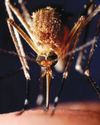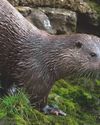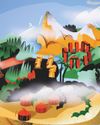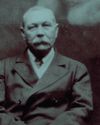The deeper we look into the vastness of space, the further back in time we are able to see. Now, NASA’s RELICS project is pushing this phenomenon as far as it can in an attempt to observe galaxies that formed at the very beginning of the Universe

As the fireball of the Big Bang expanded and cooled, it went from white-hot to cherry-red before finally fading into invisibility. The Universe was plunged into blackness and the resulting cosmic dark age stretched on interminably. Over time, the Universe doubled in size, doubled once more, over and over again, then, one day, something extraordinary happened. The dark age came to an end. Across the entire length and breadth of the Universe, stars began switch on like lights on a Christmas tree.
The first stars either came together under gravity to create the first galaxies, or were actually born in the clouds of gas and dust that made up the first galaxies. And the hunt to find these first galaxies is hotting up. One project – the Re-ionization Lensing Cluster Survey (RELICS) – has found around 300 galaxies that existed in the first billion years of the Universe’s history. One galaxy in particular is so old that the Universe it occupied was a mere 3 per cent of its present age of 13.82 billion years. Such objects appear in astronomers’ telescopes like persistent after-images, their light having travelled across space for billions upon billions of years before reaching us.
BACK IN TIME
More than 40 astronomers in many countries have been involved in the RELICS project, contributing hundreds of hours of observing time on the Hubble Space Telescope and the Spitzer Space Telescope. However, the principal observing instrument is the Universe itself. The gravitational fields of the massive clusters of galaxies that pepper the Universe act like giant lenses that focus and magnify the light of more distant galaxies that are often far too faint to see by any other means. “We take advantage of nature’s own telescope,” says Dan Coe, principal investigator of RELICS at the Space Telescope Science Institute in Baltimore.
Bu hikaye BBC Earth dergisinin July - August 2019 sayısından alınmıştır.
Start your 7-day Magzter GOLD free trial to access thousands of curated premium stories, and 9,000+ magazines and newspapers.
Already a subscriber ? Giriş Yap
Bu hikaye BBC Earth dergisinin July - August 2019 sayısından alınmıştır.
Start your 7-day Magzter GOLD free trial to access thousands of curated premium stories, and 9,000+ magazines and newspapers.
Already a subscriber? Giriş Yap

World's First Malaria Vaccine
The World Health Organization’s director-general hails ‘historic moment’ as mass immunisation of African children begins

Is River Pollution Putting The Species In Jeopardy Again?
Ten years ago, it was jubilantly announced that o ers had returned to every county in England. But is river pollution putting the species in jeopardy again?

The Big Burnout
Long hours, low pay and a lack of appreciation — among other things — can make for a stressful workplace and lead to burnout. It’s something we should all be concerned about, because over half of the workforce reports feeling it

Putting Nature To Rights
More countries are enshrining the right to a clean environment into law. So if a company or government is impinging upon that right, you could take them to court

Mega Spaceship: Is It Possible For China To Build A Kilometre-Long Spacecraft?
Buoyed on by its successful Moon missions, China has launched a five-year study to investigate the possibility of building the biggest-ever spacecraft

Are We Getting Happier?
Enjoying more good days than bad? Feel like that bounce in your step’s getting bigger? HELEN RUSSELL looks into whether we’re all feeling more cheery…

“Unless the Japanese got the US off their backs in the Pacific, they believed they would face complete destruction”
Eighty years ago Japan’s surprise raid on Pearl Harbor forced the US offthe fence and into the Second World War. Ellie Cawthorne is making a new HistoryExtra podcast series about the attack, and she spoke to Christopher Harding about the long roots of Japan’s disastrous decision

Your Mysterious Brain
Science has mapped the surface of Mars and translated the code for life. By comparison, we know next to nothing about what’s between our ears. Over the next few pages, we ask leading scientists to answer some of the most important questions about our brains…

Why Do We Fall In Love?
Is it companionship, procreation or something more? DR ANNA MACHIN reveals what makes us so willing to become targets for Cupid’s arrow

Detecting the dead
Following personal tragedy, the creator of that most rational of literary figures, Sherlock Holmes, developed an obsession with spiritualism. Fiona Snailham and Anna Maria Barry explore the supernatural interests of Sir Arthur Conan Doyle